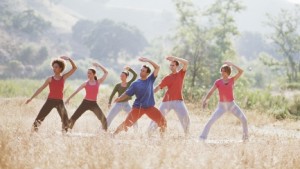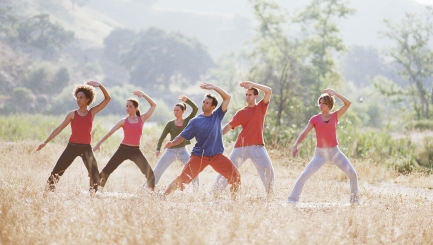How Tai Chi Can Be Used To Treat Parkinson’s Disease
 Parkinson’s disease has had a lot of press since Michael J. Fox’s experience of the condition was made public. This has been publicity it deserves, as it is a condition affecting 1% of people. Suffers live for years with a chronic neurological degenerative disorder that leaves them feeling like prisoners in their own bodies. With Parkinson’s it is important to look into all the complementary therapies that can be of help to physical functions, in the hope of slowing its progress and enhancing the wellness of the sufferer.
Parkinson’s disease has had a lot of press since Michael J. Fox’s experience of the condition was made public. This has been publicity it deserves, as it is a condition affecting 1% of people. Suffers live for years with a chronic neurological degenerative disorder that leaves them feeling like prisoners in their own bodies. With Parkinson’s it is important to look into all the complementary therapies that can be of help to physical functions, in the hope of slowing its progress and enhancing the wellness of the sufferer.
Good news has been found in the usefulness of Tai Chi as a physical therapy to sufferers of Parkinson’s. As a low impact exercise, it already offers great benefits to patients with arthritis and fibromyalgia. Add the slow and gentle form of exercise to Tai Chi’s focus on balance, and you have a practice that is theoretically well-suited to the condition of Parkinson’s. The sense of balance is one of the first things to be affected by those suffering Parkinson’s disease, and this has a terrible knock-on effect on lifestyle and wellbeing. Functional ability diminishes and there is an increased risk of falling. The experience of losing control in this way can be very traumatic, so cultivating a practice that works on balance and graceful movement is sure to be emotionally empowering, as well as improving flexibility and range of motion.
Dr. Fuzhong Li of the Oregon Research Institute conducted a study into the use of Tai Chi in helping patients with Parkinson’s disease. Patients between the ages of 40 and 85 took one-hour Tai Chi sessions twice a week. They undertook a routine designed to work on weight-shifting and recovery from the loss of balance. After a period of six months, participants in the trial were assessed for their steadiness. Those who had been practicing Tai Chi were found to be 2.5 times steadier than fellow participants enrolled in resistance training classes (another popular therapy for Parkinson’s). They also showed a four times better sense of balance than those who did stretching exercises alone.
Tai Chi is a practice that, once learnt, requires no special equipment or supervision. Exercises are easy to learn and can be incorporated into the patient’s home treatment programme. The benefits to motor function are evident, and patients can also enjoy the multiple other benefits that Tai Chi brings to emotional and spiritual health.


Comments are closed.